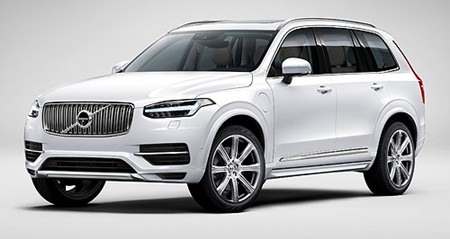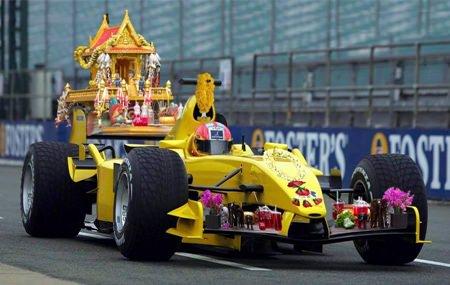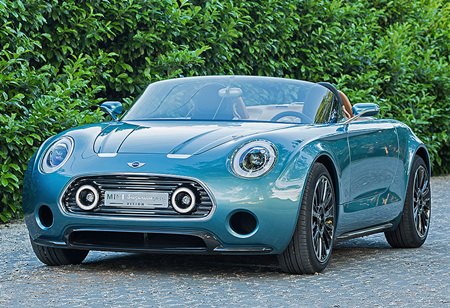 |
|
 |
|
AUTO MANIA:
by Dr. Iain Corness
[email protected] |
|
|
|

Volvo pins its hopes
on the XC90 SUV

Volvo XC90
Volvo has been having a tough time over the past 15
years. The Volvo Car Corporation was sold to Ford Motor Company for
$6.45 billion during 2000, and Ford placed it within the Premier
Automotive Group alongside Jaguar, Land Rover and Aston Martin. Volvo
engineering resources and components would be used in various Ford, Land
Rover and Aston Martin products, with the second generation Land Rover
Freelander designed on the same platform as the second generation Volvo
S80. The Volvo T5 petrol engine was used in the Ford Focus ST and RS
performance models, and Volvo’s satellite navigation system was used on
certain Aston Martin Vanquish, DB9 and V8 Vantage models. However, it
did not make a profit for Ford and in 2010 Ford sold the Volvo Car
Corporation to Geely Automobile of China for $1.8 billion, following on
from their sale of Jaguar Land Rover in 2008 and Aston Martin in 2007.
Hardly a success story for Ford, losing $4.65 billion in 10 years.
However, Geely are trying very hard to get Volvo back up as a major
player in the automotive market. Volvo Car Group president and CEO Hakan
Samuelsson said the launch of the new XC90 is a significant day in the
Swedish car-maker’s 87 year history, marking a turning point for the
brand. “This is one of the most important days in our history,” he said.
“We are not just launching a car, but re-launching our brand. This day
marks a new era for our company. The XC90 paves the way for a portfolio
of exciting new cars to come in the following years.”
They certainly are pinning their hopes on this car (SUV, sorry) to raise
Volvo from the doldrums.
Volvo has built up an enviable history in safety, both active and
passive. Volvo says that the XC90 ushers in two world firsts - a
“run-off road” protection package and an “autobrake at intersection”
functionality.
The run-off safety package detects the vehicle running off the road and
tightens the seatbelts to keep occupants in the safest position, while
energy-absorbing functionality between the seats and seat frames softens
the forces when the vehicle has a hard landing.
The automatic braking system activates if the driver turns in front of
an oncoming car. This system will fall under Volvo’s City Safety banner
that has all automatic braking functions, such as pedestrian and cyclist
detection in day and night time, that will be standard across the XC90
range.
Mind you, has Volvo tried this out with Thai motorcycles I wonder?
Volvo (Geely) reports that it is very serious about building the XC90 as
a new model, with a $10 billion development program. To be publically
revealed at the Paris motor show in October, the new XC90 is the first
Volvo production vehicle to incorporate its new design language as
previewed by concepts such as the XC Coupe at this year’s Geneva motor
show.
The second-generation XC90 will mark the first use of Volvo’s flexible
Scalable Product Architecture (SPA) that will underpin a number of its
future models, including next-gen versions of the S60/V60 mid-sizer and
the XC60 compact SUV.
Volvo Car Group senior vice president of research and development Peter
Mertens said SPA had allowed the company to produce an SUV that combined
space, versatility and efficiency. “SPA has enabled us to create the
world’s first SUV without compromises,” he said. “You get the in-command
feel, generous interior space and flexible capability combined with the
agility and smooth comfort of a much smaller and lower car. The
adrenaline rush that is key to true driving pleasure is delivered by
powertrains that offer an unrivalled combination of power and clean
operation. And since the XC90 carries the Volvo badge, world-class
safety is standard.” (All good PR-speak.)
With powertrains, the XC90 offers a 2.0 liter four-cylinder Drive-E
powertrains, including a range-topping plug-in hybrid, known as the Twin
Engine.
The hybrid powertrain uses a 2.0 liter four-cylinder supercharged and
turbocharged petrol engine matched with an electric motor, offering a
combined output of about 300 kW and expected carbon dioxide emissions of
60 g/km (if you are interested in emissions).
Volvo’s plug-in will join a growing number of hybrid-powered large
premium SUVs, including the Lexus RX450h, BMW’s mooted X5 eDrive, and
the Range Rover diesel-electric hybrid.
|
|
 |
Thailand enters F1 team

Thai F1 car
Sorry, but I nicked this photo from the internet, but it was
just too good not to give it more media space! Obviously a great example of what
can be done by skilled Photoshop exponents. And please, don’t write in, it is
harmless fun.
|

|
“Super-MINI” springs out of Italy

“Super-MINI”
Many years ago, there was a version of the Mini called the
Innocenti, with the body designed by Bertone. As they say, history repeats
itself and (new) MINI and Touring Superleggera, the tradition-steeped design and
coach building house based in Milan, have brought the MINI Superleggera™ Vision
out from under wraps.
My Press kit claims that the MINI Superleggera™ Vision is on the one hand a
classic roadster - a compact and agile two-seater - expressing the most
minimalist and emotional style of motoring; and on the other hand its electric
drivetrain gives the car distinctly modern driving dynamics.
“The MINI Superleggera™ Vision elegantly perpetuates what the Classic Mini
started 55 years ago: reduction to the essentials. Its energetic, minimalistic
design embodies the dynamic essence of an automobile. At the same time it
creates unique emotional beauty in combining the past and future of the
automotive industry, i.e. traditional coachwork craftsmanship and modern design
styling. It was a pleasure for me to design a concept like this,” says Anders
Warming, Head of MINI Design.
The front of the MINI Superleggera™ Vision features the traditional MINI design
icons: two circular headlights and a hexagonal grille define the unmistakable
front section, providing a contemporary interpretation of features which have
become firmly established over decades. There are also striking classic sports
car elements such as a wide track and distinctively curved wheel arches that
give the front a dynamic presence. The classic MINI bonnet stripes are
three-dimensionally embossed and run on into high-quality polished aluminum
accents.
Now, despite the rhetoric, this version of the MINI (BMW likes us to use caps
for MINI, to differentiate from the original “Mini”) is taking another step
forwards with the electric powertrain, which is most likely borrowed from the
BMW i3
|

|
What did we learn from the Italian GP?
MWell, we learned that Hamilton is the quicker of the two
Mercedes drivers, and Rosberg can be made vulnerable when under pressure. And
when I say “quicker”, he was in front of Rosberg in each of the three qualifying
sessions, and first in the race and fastest lap as well. Only by margins of 0.1
seconds, but in modern F1 terms that represents total domination.
After the Mercedes duo there was a total mix of all the teams, with Williams
again showing speed and reliability. Valtteri Bottas, who is marginally quicker
than his older team mate Massa, drove a particularly stylish race after a
dreadful start which saw him dropped to 11th after being third in Qualifying.
However, it was a great day for Williams with Massa third (and no mistakes for
once) and Bottas fourth.
Over in the Red Bull paddock, the driver formerly known as “The Finger” must be
wondering where his speed has gone, with Vettel once again shown the way home by
his new young team mate Daniel Ricciardo, who overcame his dreadful start,
dropping to 12th on the first lap but finishing in fifth. Bottas and Ricciardo
are definitely the new stars of F1.
It was the Italian GP, and what happened to Ferrari’s Fernando Alonso, the
darling of the Tifosi? The electrical recovery system (ERS) gave up, finishing
Alonso’s race. His first non-finish for mechanical reasons since 2010, an
amazing run. His teammate Kimi Raikkonen has not been having an amazing run,
other than the fact that he went to sleep again and Ferrari haven’t awarded him
a DCM (Don’t Come Monday). Ferrari are saying publically that Kimi is locked in
for 2015. If so, I am sure they have a team of Italian lawyers looking for the
get-out clause!
Slowly but surely McLaren are coming back into contention. Not as good as
Williams, but both Button and Magnussen finished in the top 10, though Magnussen
was given a retrospective penalty which then dropped him out of the top 10. The
heinous crime was putting another car off the track. This was with the two cars
side by side through the esses and two into one did not go. What would the
stewards rather happen? A car gets pushed off or a full scale crash? This was a
racing incident and nothing else. The stewards are far too harsh at times and
too lenient at others. They need to have the same stewards every meeting. Simple
fix.
Force India are always there in the middle of the pack, with both Perez and
Hulkenberg showing strong in-fighting skills, but the car just isn’t good
enough.
As for the rest, purely ‘make-weights’ or mobile chicanes I am afraid, keeping
going with pay drivers. I rather like Bernie’s idea of letting the top teams run
three cars and get rid of the bottom of the entry list altogether.
The finishing order shows only six teams in the top 10. (Six teams with three
cars puts 18 on the grid immediately.
| 1 LHamilton |
Mercedes |
232.449 kph |
| 2 N Rosberg |
Mercedes |
01:19.1 |
| 3 F Massa |
Williams |
01:19.1 |
| 4 V Bottas |
Williams |
01:19.4 |
| 5 D Ricciardo |
Red Bull |
01:19.5 |
| 6 S Vettel |
Red Bull |
01:20.0 |
| 7 S Perez |
Force India |
01:20.1 |
| 8 J Button |
McLaren |
01:20.1 |
| 9 K Raikkonen |
Ferrari |
01:20.1 |
| 10 K Magnussen |
McLaren |
01:20.1 |
| 11 D Kvyat |
Toro Rosso |
01:20.2 |
The next GP is in Singapore on September 21 and is a night race around the
houses. Not really a circuit where a driver can display his talents.
|

|
Autotrivia Quiz
Last week I mentioned the Hindenburg. It had 16 features
which it shared with a race car entered in the 1931 and 1932 Indianapolis 500,
and with the Wartsilia 46F engine that produced 25,700 BHP. What were the 16
features? The answer was that all of these were powered by V16 engines.
So to this week. During the Cold War after WW2 there was one car which was named
to glorify a dictator, but when the dictator died, the brand was changed to
glorify the designer. What was the year and what were the names of the two
brands?
For the Automania free beer this week, be the first correct answer to email
[email protected].
|
|
 |
|
 |
|
E-mail:
[email protected]
Pattaya Mail Publishing Co.Ltd.
62/284-286 Thepprasit Road, (Between Soi 6 & 8) Moo 12, Pattaya City T. Nongprue, A. Banglamung,
Chonburi 20150 Thailand
Tel.66-38 411 240-1, 413 240-1, Fax:66-38 427 596
Copyright ? 2004 Pattaya Mail. All rights reserved.
This material may not be published, broadcast, rewritten, or
redistributed.
|

